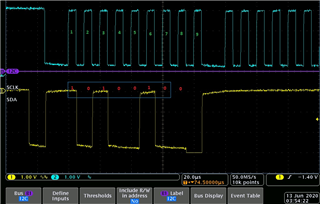Hi,
I am using nRF52840 to communicate with the EEPROM. 24AA32AT-I/MC over I2C interface. The TWI scanner example detects the EEPROM address correctly for me .Now, I want to read/write the EEPROM.
As you know nrf and other drivers are deprecated in the SDK 16 and its recommended to use nrfx/latest drivers. I just wanted to know that out of the 4 TWI/I2C examples in SDK 16, which is best suited for my application for further development and does not use the legacy drivers.
Thanks





